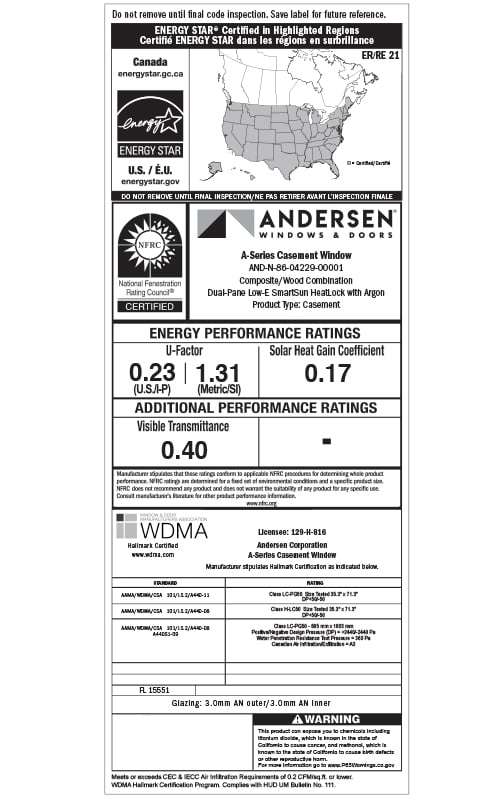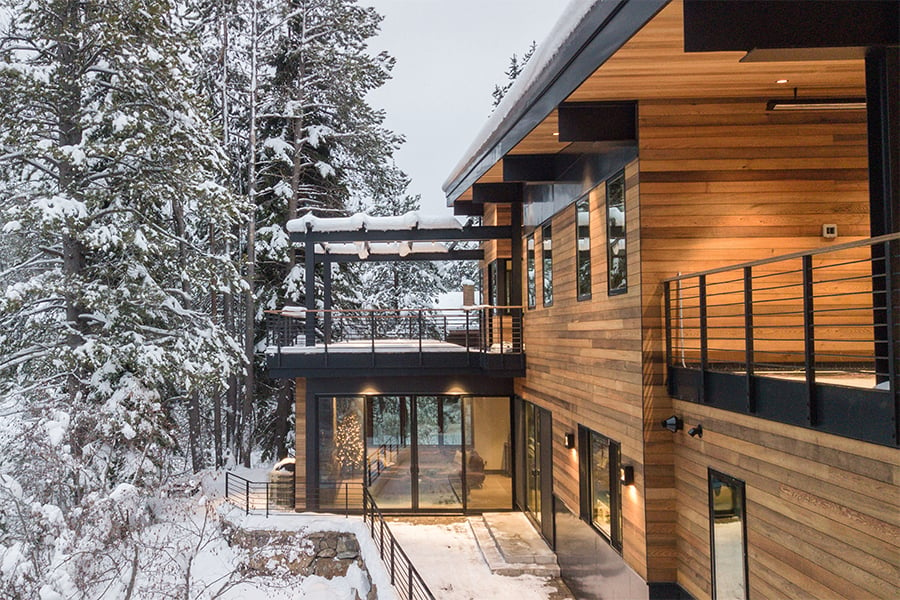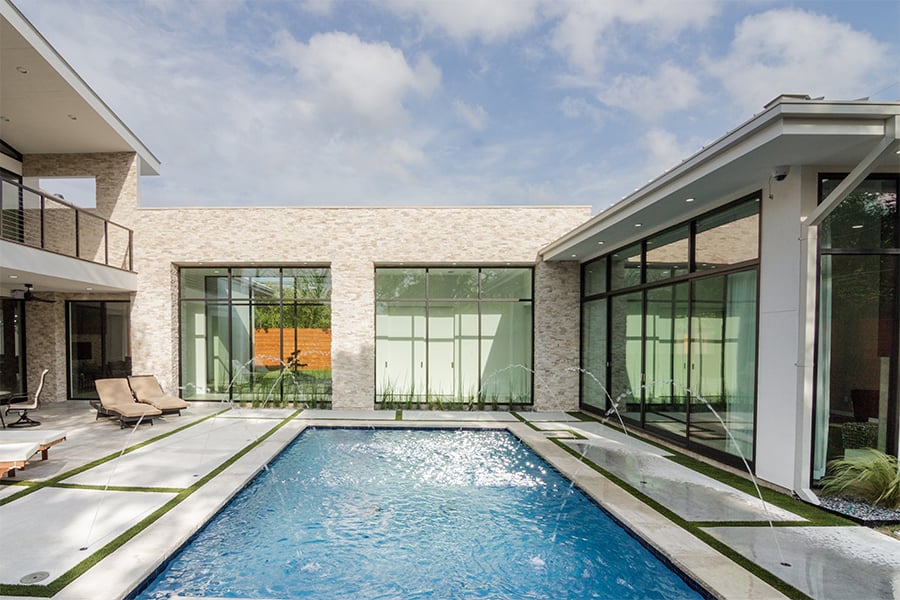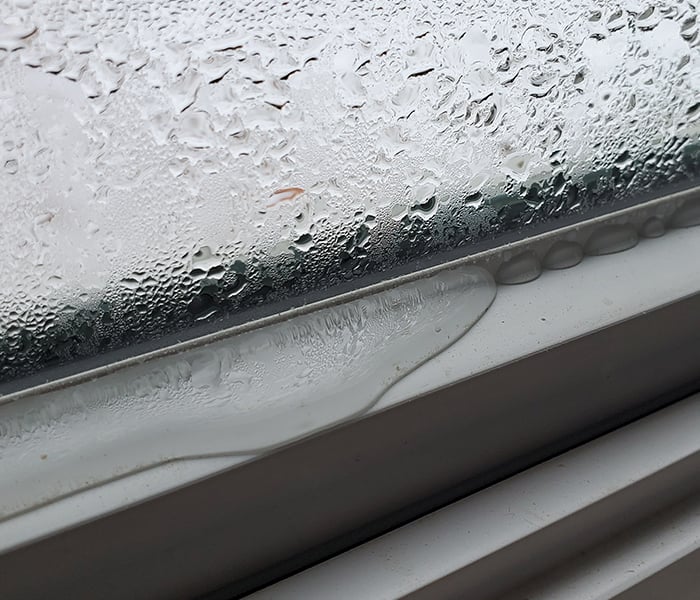By Randy Williams
How to account for climate when picking out windows
Understanding the local climate is key to selecting the right windows for your project. Guest contributor Randy Williams explains what you need to know.

Where do you live? Is it cold or hot, wet or dry, or something in between? I live in an area that is considered cold and moist, Northern Minnesota. My climate is much different than Tucson, Arizona or Kansas City, Missouri. Because of the climate differences, some of my choices in building materials will be different, including my choice of windows. Windows should also be chosen with local climate in mind.
In this piece, I’ll help you understand how climate affects code, what measures you should look at when assessing windows for your climate, and how window selections can improve performance.
How climate affects code
The American Society of Heating and Air-Conditioning Engineers (ASHRAE) has developed a climate zone map that’s included in the International Residential Code (IRC), Chapter 11, Energy Efficiency. It’s meant to aid in designing heating, cooling, and ventilating systems that match the insulation, air sealing, and moisture profile of a building.
The map was created using historic climate data to divide the U.S. into distinct climate zones by county. Climate zones range from 0 to 8, where 0 is extremely hot and 8 is extremely cold. Within each climate zone, there are subcategories indicating whether the location is moist, dry, or marine. For example, Texas spans climate zones 1 through 4 and within those climate zones has both humid and dry subcategories. Temperature and precipitation are key data points used in developing the climate zone map, but other weather metrics are considered as well, such as temperature, wind speed and direction, precipitation, humidity, and solar radiation.
Building codes base window performance on local climate. There are two window-specific metrics that the codes address, U-Factor and Solar Heat Gain Coefficient (SHGC) values. U-Factor values are key in cold climates, and SHGC values are key in warm climates.

U-factor and SHGC are just two of the window performance metrics listed on the label that’s attached to every Andersen window.
Understanding heat loss in cold climates
Building codes will require better insulating properties from windows in cold climates, than in warm climates. To understand how well a window keeps heat from escaping, you need to look at its U-Factor value.
U-Factor values measure the rate of energy (heat) loss. These values are listed differently than what you might be familiar with if you're aware of R-Value, which measures resistance to heat flow. With R-Value, the higher the number, the better the insulation performance. With U-Factor, lower numbers are better because it’s a measure of how fast heat moves through the window assembly, which means it’s the inverse of R-Value. U-Factor values are between 0 and 1 and will almost always be a decimal point.
Here’s what the IRC lists for U-Factor values in each climate zone:*
- No U-Factor requirements in climates zones 0 and 1
- 0.40 or lower in climate zone 2
- 0.30 or lower in climate zones 3 through 8
* Based on the 2021 IRC table R1102.1.2 (R402.1.2))
In addition to the product’s performance label, you can find U-Factor values for Andersen products by working with your local dealer or by looking up Andersen products in the NFRC Certified Product Directory.
Factors affecting window performance in a cold climate
Glass, frame construction, and installation can all improve the insulation value of a window.
A key selection is the right low-emissivity (Low-E) glass coating or combination of coatings. In most climates, a Low-E4® glass coating is a good choice. It reflects heat away in summer and keeps heat in during winter. However, there are other options that can help make the most of the sun in heating a home.
The number of panes of glass used in a window’s construction also makes a difference. While dual-pane glass is standard on Andersen windows, and an improvement over the single-pane glass sometimes found in older homes, triple-pane glass is the most insulating option. Triple-pane glass is available with windows from the Andersen® A-Series, E-Series, and 400 Series product lines — read more about this option.
Thermally broken frames are window frames where none of the materials on the exterior of the window are continuously connected to the interior of the window. This break helps limit the transfer of energy between outside and inside. Most Andersen® windows are thermally broken, including the best-performing A-Series product line.
Finally, a proper installation, i.e., one that connects all the control layers around the window, will work in conjunction with thermally broken frames.

In cold climates, you may want as much heat from the sun entering the home as possible. It will depend on the home of course, some low-load homes can quickly overheat with too much sunlight. A good designer will be able to take these variables into account.
Understanding heat gain in warm climates
Building codes limit how much unwanted heat a window allows into a building by setting standards for SHGC. SHGC measures how much solar heat gain is generated when sunlight shines through a window. Codes for the SHGC metric have listed values between 0 and 1 with lower numbers allowing less solar heat gain through a window.
Here’s what the IRC lists for SHGC in each climate zone:**
- 0.25 or less is required in hot climates, zones 0 to 3.
- 0.40 or less in more moderate climates, zones 4 and 5.
- There are no requirements for SHGC in cold climates (zones 6, 7, and 8). In these climates, heat from the sun can be welcome.
** 2021 IRC, Table R1102.1.3 (R402.1.3) Insulation Minimum R-values and Fenestration Requirements by Component.
In addition to the product’s performance label, you can find U-Factor values for Andersen products by working with your local dealer or by looking up Andersen products in the NFRC Certified Product Directory.
Factors affecting window performance in warm climates
Glass coatings, frame construction, and installation can all help a window perform well in a hot climate. Changes in SHGC are typically achieved by the addition of different Low-E glass coatings that are applied to the glass during manufacturing. Thermally broken window frames where none of the window materials on the exterior are continuously connected to the interior — as the majority of Andersen windows are — will also help, as will proper installation that connects all the control layers to the window.

Condensation: another climate-related factor
Heat loss and heat gain are important performance considerations when choosing a window, but there are other considerations as well. In the cold climate where I live, it’s common to see condensation on our windows during the heating season.
This is the result of water vapor in the air coming in contact with the cold surface of the window glass. The temperature of the glass is below the dew point temperature and the water vapor in the air condenses on the glass, the same principle of how a dehumidifier works. Window condensation can also occur in warmer climates but is usually on the exterior of the window because of very high exterior humidity levels and cooler temperatures inside the home. Condensation is the result of the humidity of the environment and not a glass failure. Exterior condensation is an indication that a window is energy efficient — the outer pane is thoroughly insulated from the heat indoors. Interior condensation can be a warning sign that humidity is too high indoors.

Window condensation is caused by a cold glass surface and high humidity level, the dew point temperature has been reached.
When you make window selections based on local climate, it will help your window perform at the level needed to keep a home comfortable for your clients.
Randy Williams started his construction career in the mid-1990s installing electrical, plumbing, and HVAC systems with his brother. In the early 2000s, his family branched into building and renovating homes. By 2005, Randy was working full time as a general contractor. He furthered his education in 2009 becoming an energy auditor. Today, Randy works with other contractors, homeowners, and utilities performing energy audits, building diagnostics, energy design, and code compliant testing, and assisting in the design of energy-efficient homes. He is also a contributing author to several trade publications and occasionally teaches home diagnostic testing and building science topics at different trade shows and training events.
